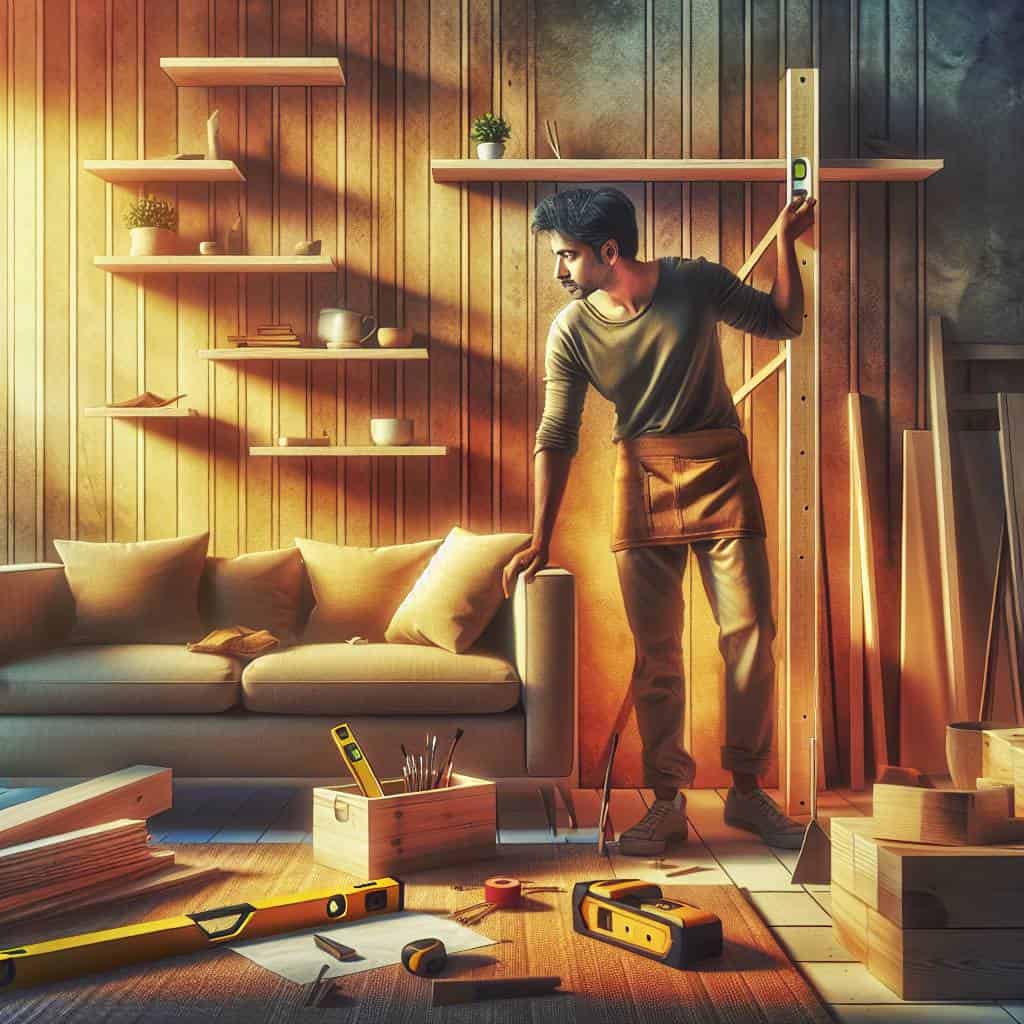I remember the day I decided to tackle my first DIY floating shelf project. Picture this: me, standing in the living room, surrounded by a chaotic sea of tools and wood planks, convinced that a couple of YouTube videos had transformed me into a master craftsman. Spoiler alert: they hadn’t. I was armed with a stud finder that seemed to have a vendetta against me and a level that mocked my every attempt to align things. As the first shelf precariously tilted, threatening to send my wife’s favorite vase to its ceramic doom, I realized—much like an engine with a missing bolt—something was off.

But hey, every misfire is a chance to learn, right? That’s where this guide comes in—no fluff, just the nuts and bolts of what you need to know. We’ll dig into the details of wall types, the art of woodworking, and how to make your home decor dreams a reality without having to hide shoddy brackets behind strategically placed books. So, roll up your sleeves and let’s get into the real work—because these shelves are going to stand as firm as your resolve to conquer the DIY frontier.
Table of Contents
The Great Wall Conspiracy: My Hidden Agenda with Floating Shelves
Alright, let’s get into the nitty-gritty of my so-called “Great Wall Conspiracy.” It’s not about espionage or secret plots, but it’s about something just as thrilling—floating shelves. You see, the real intrigue here lies in the battle against gravity, those hidden brackets, and the illusion of wood magically clinging to your walls. Now, why go through the hassle, you ask? Because the idea of a shelf that appears to defy physics is, quite frankly, an irresistible challenge for someone like me who enjoys a good mechanical puzzle.
The agenda is simple. It’s about transforming your four walls into more than just vertical prisons for your wallpaper. With floating shelves, you’re not just slapping up a piece of wood; you’re crafting a visual narrative. Each shelf can tell a story—your story. It’s a testament to your woodworking prowess and your ability to blend home decor with practical engineering. And let’s not forget, these shelves are a sneaky way to reclaim floor space, adding a splash of style without the need for cumbersome furniture. Think of them as the ninja warriors of your living room—silent, effective, and always ready for action.
But here’s the real kicker. Hidden brackets. These little gems are the unsung heroes of the floating shelf world. They provide the backbone, the invisible force holding everything together, much like the unsung components of a well-tuned engine. It’s about precision and understanding the craft. You can’t just slap these things together with a wing and a prayer. There’s a beauty in the mechanics, a satisfaction in knowing that the shelves you’ve painstakingly mounted aren’t going to come crashing down like a scene from a bad slapstick comedy. So, there you have it—my hidden agenda laid bare. It’s about control, innovation, and a touch of rebellion against the mundane. Let’s make those walls work for us, not against us.
The Art of Defying Gravity
Behind every DIY floating shelf is a secret pact with gravity, a hidden bracket holding up more than just wood and dreams. It’s the silent partnership between the wall and the craftsman’s hands, turning simple planks into something that defies both expectation and physics.
The Wall’s Whisper: Lessons from a Shelf
As I step back and admire the precarious balance of my floating shelves, I realize it’s not just about the wood and brackets. It’s about understanding the stubbornness of walls and the secrets they hide beneath layers of paint. Each shelf is a testament to my stubbornness, too—a fight against gravity, a wrestling match with the stubborn studs that seemed intent on remaining hidden. In a way, it’s like life: the things that hold us up are often unseen, quietly doing their job while we showcase our best pieces to the world.
This journey wasn’t just about woodworking or home decor; it was about learning to listen to the whispers of the wall. In every creak and groan of the timber, there’s a story, a lesson. I’ve learned patience in the face of uneven surfaces and the art of precise measurement. But more than that, I’ve learned that sometimes, the satisfaction comes from the struggle itself. So, here’s to more adventures with hidden brackets and more tales from the undersides of my creations. Because at the end of the day, it’s the hidden work that holds everything together.